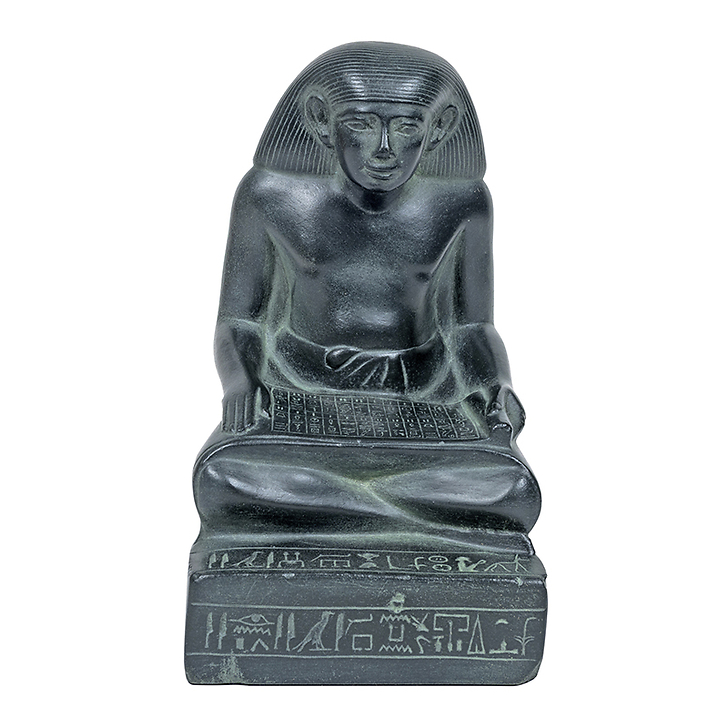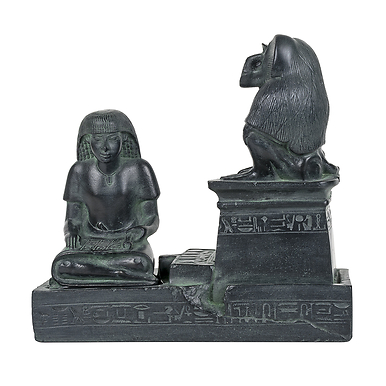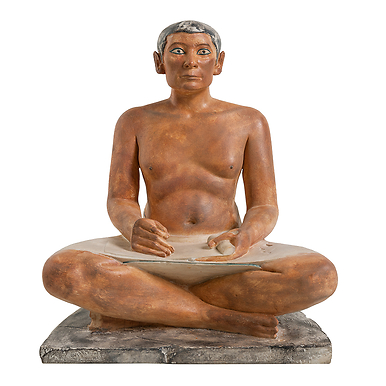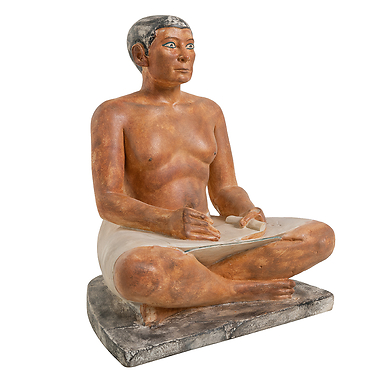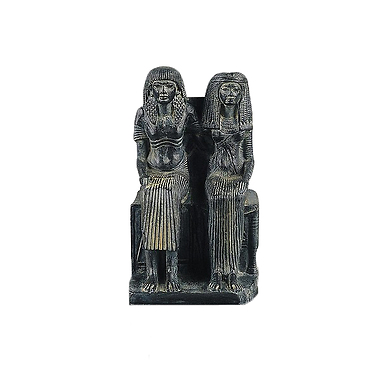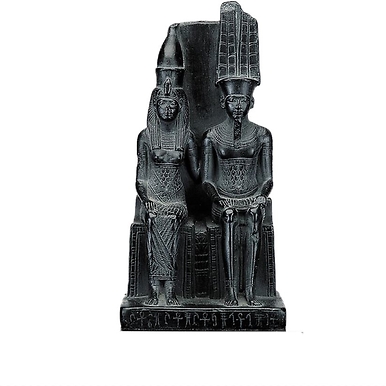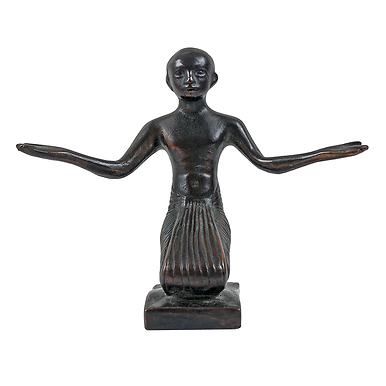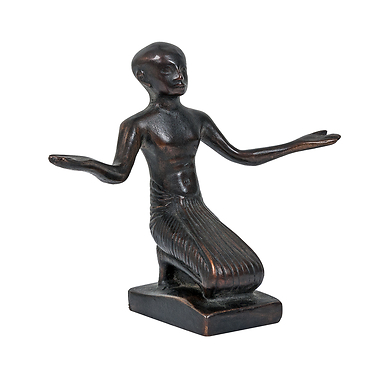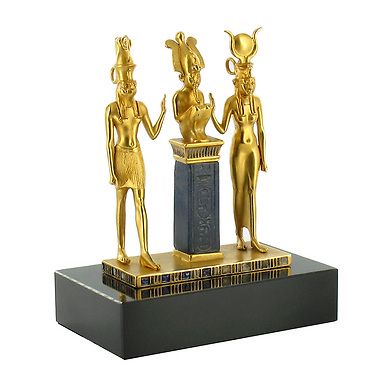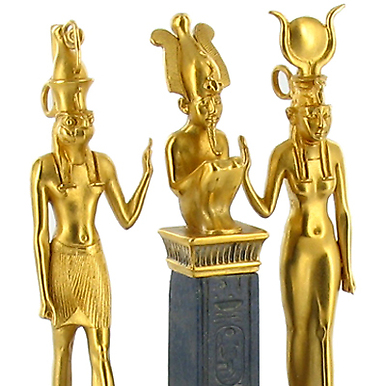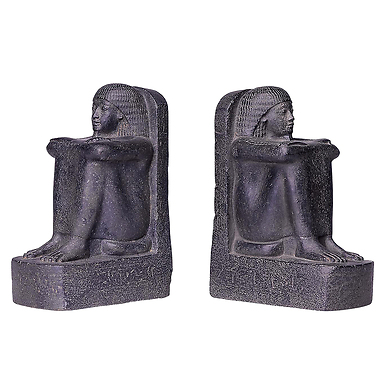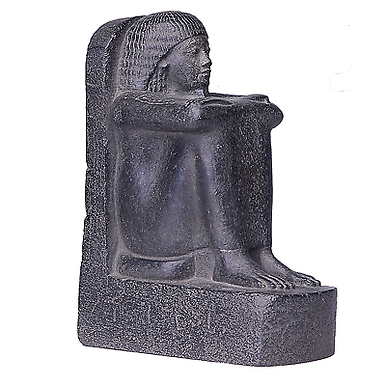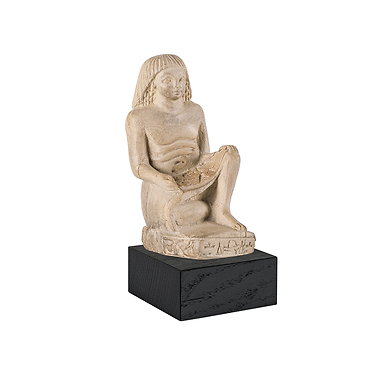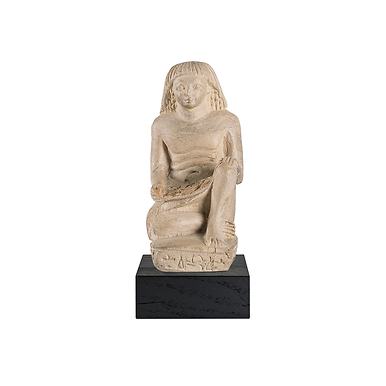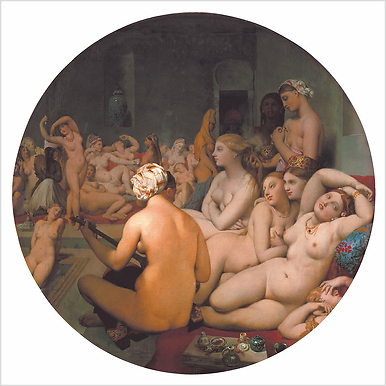Sculpture Scribe Iay
RE000108
Reproduction patinated by hand. Mold made from an imprint of the original work
Iay, a high ranking official of the Pharaon (Chief of the Double Treasure), is seated cross-legged in the well-known position of a scribe.
In his left hand, he holds a papyrus unrolled over his knees, showing the list of...
Read more
Reproduction patinated by hand. Mold made from an imprint of the original work
Iay, a high ranking official of the Pharaon (Chief of the Double Treasure), is seated cross-legged in the well-known position of a scribe.
In his left hand, he holds a papyrus unrolled over his knees, showing the list of funerary offerings. He wears a large wig, which leaves his ears uncovered, and a short belt-less skirt tied simply at the waist with a knot.
The first portrayals of seated scribes go back to the 4th Dynasty (around 2620-2500 BC). At that time they were princes of royal blood but officials gradually adopted this position.
The scribe is he who knows how to read and write, who uses divine words (the Egyptian term for hieroglyphs), he is the one who imposes taxes, who receives them, who draws up inventories of everything that exists, in short, he has the most important and best of professions. It is also thanks to scribes that Egyptian literature is known. Their patron is Thot.
Close
Login to see prices
Sold by GrandPalaisRmn

